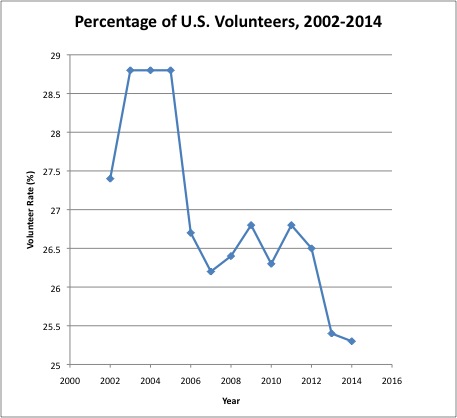Democratic consolidation: The process by which a new democracy matures, in a way that means it is unlikely to revert to authoritarianism without an external shock. – Wikipedia
Today marks the 30th anniversary of democracy protests in South Korea–known as the 6월 민주항쟁 (the June Democracy Movement)–that led to democratic consolidation in the South Korea. While so crucial to the identity of Korea today, and even having learned about it in school, its significance wasn’t in my consciousness until much later as an adult when I had gained a greater appreciation of the human fight for progress (which continues today!) across centuries, especially recent decades.
(Aside: Much of that recent appreciation came via a Democratic Development MOOC on Coursera, taught by Stanford professor Larry Diamond. The movement in Korea itself is part of the greater context of a democratization wave (1960s-1980s) across Asia, worth learning for those w/o contemporary Asian history context)
As I started the appreciate the historical relevance that happened in the span of my family’s lifetimes, the need to be proactive in dealing with today’s challenges is also clear, as the fight for democracy continues across this world.
The background of the Korean protests are fascinating and worth reading into (I won’t go into them here), but despite much uncertainty, they ended peacefully, with concessions from the then-authoritarian government to rewrite the Constitution and established the Sixth Republic of Korea, leading to the following promises being implemented:
- Direct participation in upcoming presidential election for all citizens over age 20
- Freedom of candidacy and fair competition
- Amnesty for Kim Dae-jung and other political prisoners
- Protection of human dignity and promotion of basic human rights
- Freedom of the press and abolishment of the restrictive Basic Press Law (see: Media of South Korea)
- Educational autonomy and local self-government
- The creation of a new political climate for dialogue and compromise
- Commitment to enact bold social reforms to build a clean, honest, and more just society.
https://en.wikipedia.org/wiki/South_Korean_presidential_election,_1987
I had just turned 2 at the time, so I have no recollection of the actual protests, but my parents do remind me that it was only months before we moved to the U.S. in late 1987. By the time we moved back in 1995, it had only been a few years since the events, but indeed, at least what I observed and felt like a functioning democracy.
Through the eyes of history, these events are seen as the Asian component of the Third Wave of Democracy, which also includes similar movements in Philippines and Taiwan. As most of the world knows, these transitions from an authoritarian rule to democracy are often messy, with the principle characters being young people (students) against the various proxies of authoritarian regimes.
And not all of these movements succeed or remain peaceful, as sadly, we we’ve seen recently in the Middle East after the much anticipated Arab Spring, and when things go wrong, horrible things can happen like the ongoing tragedy in Syria.
And with major disruptions in stability, the temptation of authoritarianism when facing crises real, or amplified by the political climate is ever present. One notable rollback of liberal democratic norms has been in the Philippines, which despite their history of democracy, we are seeing with the current administration, a steep decline in the rule of law, and a sharp rise in populism, supporting a distinct shift toward an authoritarianism. For someone like me, who focuses on trends, this is not encouraging, and across the world, we’ve seen with a rise in those willing to fan the flames of populist resentment. Not in Korea though, and with the newly elected center-left president, Korea’s execution of democracy moves forward.
Still, advocates for democratic development can take hope in the one more recent event in South Korea: the overwhelmingly peaceful civil protests that ultimately led to the impeachment of President Park (a constitutional process that hasn’t even (yet) happened in the U.S.). With this and the subsequent peaceful transition of power to an opposition party president, it is clear that despite the chaos, it was a test and a win for the rule of law, democracy as a principle, and the people at large.
I actually remember when I was younger, seeing a US official address a crowd of students in Korea. Referring to the idea of “national stability” — he said something along the lines of, “In Korea, if you had an impeachment, the country would tear itself apart.” Glad to see that wasn’t true.
Politics aside, kudos to Korea for demonstrating how democracy is done! It is something the country should be incredibly proud of. What had been still on formation while growing up, as of today, I’d say that it is one of the few true democracies in East Asia, along with Japan and Taiwan.
Looking back at the last 30 years, I think it’s important to remember the active role the citizenry must play in fighting for and preserving democratic norms and values. The global push and pull of nationalism and internationalism has never been so readily apparent, and in this joined mission, we must realize that the universal principles and norms of liberal democracy must be fought for and the battles, and heroes, remembered.
The specific date of the anniversary does celebrate one particular incident — a democracy movement protester that was killed by a police tear gas grenade. That event is considered crucial to bringing public awareness to the authoritarian regime’s violent crackdown of the protests and is considered a pivotal moment in public sentiment. From that shift, ultimately, the government conceded to the demands of protesters seeking democratic reforms.
Today, Korea remembers this day to remind itself of how freedom from authoritarianism must be won, and to remember those who fought in that struggle.



























